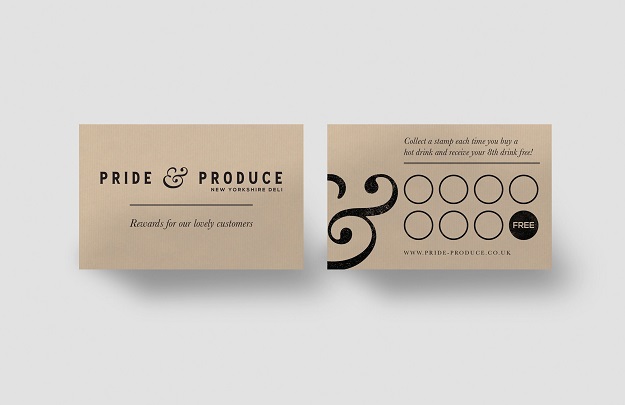Related Articles
Double the likelihood of your customer returning – the power of sustainable customer loyalty
Customer loyalty is one of those ubiquitous buzzwords that is bandied around every sales meeting and boardroom, yet most organisations fail to properly grasp how to generate, nurture and cultivate this valuable source of revenue.
The cheapest and most valuable leads are the ones that are already in your address book, yet very little seems to be known about what makes a customer buy from us again and again.
So misunderstood is this golden egg paying goose that many organisations have come to erroneously confuse constant contact with loyalty; they think if they continue to send out sales letters, make courtesy calls, and distribute email newsletters that their customers are engaged and therefore more likely to prop up their balance sheets all year long.
Be Aware of the Quick Fix
When faced with the challenge of building loyalty, even the most experienced organisations tend to fall into the well-trodden and vastly ineffective, track of ‘the gimmick’. Offering returning customers, a discount for a second order, or an attractive bulk deal, or even a free gift all seem like viable options.
In truth though, unless the customer specifically asked for some incentive, they’re likely already fairly satisfied with your pricing model. Instead of encouraging a more engaged relationship with your clients, it may serve to debase the perceived value and quality of your product lineup and reduce the buying decision to ‘cheapest deal wins’.
Even the term ‘loyal’ is misleading. Loyalty implies that customers need to be attracted and seduced, at any cost, via some cleverly invented scheme when in truth loyalty is in more about ‘retention’ than ‘invention’.
Retaining an already won client is less about the carrot and about the likelihood that they’ll stick with your offering over any other when you’ve met their expectations.
You can’t put a price on a promise, and the first step to retaining a client is keeping yours. According to Gartner, roughly 20% of your current client base are generating 80% of your profits, so the key for any business to survive and grow is to build sustainable sales stream from within your existing set of customers.
So how do we build and retain loyal customers that continue to buy from us again and again? According to recent research, it’s much simpler than you might have hoped.
Punch Me, Please

Coffee and sandwich bars are my office, and when I’m not at an event I can most likely be found surfing the circuit of free Wi-Fi wielding coffee shops in the city. I’ve accumulated an embarrassingly large collection of heavily punctuated loyalty cards to prove it.
Every time I order a sandwich at one of my regular stops, I get a single ‘smiley’ shaped punch on my card and the server explains that I get a free lunch after ten punches.
When I’ve had three sandwiches and three smiley faces, my progress could be seen in two ways – I’m either already 30% of the way to getting my promised free meal, or I’ve 70% to go.
The question is, which of these two views is more likely to compel me to get that card filled with the holes? Which view is more likely to make me return again and again to get that elusive free meal?
The answer comes when the customer moves from one step to the next and, crucially, how they perceive that progress. If I feel I’m making progress I’m happy, no matter how long the ultimate journey seems to be.
When we watch our kids play seemingly endless games on their phones they are being caught in this loop – at each level the flashing lights and sounds tell them they are making progress, even if the game can never be finished.
Test It and See
Recent research has found that a person’s likelihood to successfully achieve a goal of any kind is enhanced if they focus on the small incremental progress they have achieved so far, rather than the large amount of effort that may be left.
According to the Chicago School of Business, one possible explanation for why focusing on even a small point of progress might increase motivation is because the impact of each action can appear larger. An action that takes someone from 20% completion of a task to 40% is a doubling of progress. In contrast, moving from 60% completion to 80% represents just 33% progress.
To test the phenomenon, nearly 1,000 customers were enrolled in a loyalty scheme where they would receive a complimentary lunch after they had bought ten. 50% of the subjects were given a card that was rubber stamped with a sushi symbol every time they made a purchase from the lunch menu, thereby purposefully drawing their attention to the incremental progress they were making towards the freebie.
The remaining 50% were given a card that already had the sushi symbols printed on it, and every time they made a purchase a sushi symbol was removed using a hole-punch, thereby specifically drawing attention to the amount of effort that remained before their bonus meal. So which goal/target system was more likely to instill loyalty?
The first group, who were focusing on their incremental progress, was twice as likely to be retained as a customer and return to get their card stamped when compared against the group whose cards were already punched. Not only were they more likely to come back, but more interestingly the returned sooner and more frequently – on average returning four days sooner than the ‘punched’ group.
By focusing on what’s been done, and not what’s left to do, we can increase customer loyalty by almost double, leading to a more active sales team, and demonstrably better sales over time. Even line managers will find that emphasizing the smaller steps that their team is taking towards performance targets is more effective than focusing on the finish line.
Leadership Outcome
The corporate implications of these findings are huge. Put simply, whether your goal is to improve your organisations ability to retain existing customers, to increase the likelihood of your sales team reaching their monthly yield, or to simply motivate someone (including you) to finish something they’ve started, remember to focus on what’s been done, NOT what’s left to do.
You’ve already taken the first step on the road by reading this, after all, so that’s probably 30% of the work done – right?





